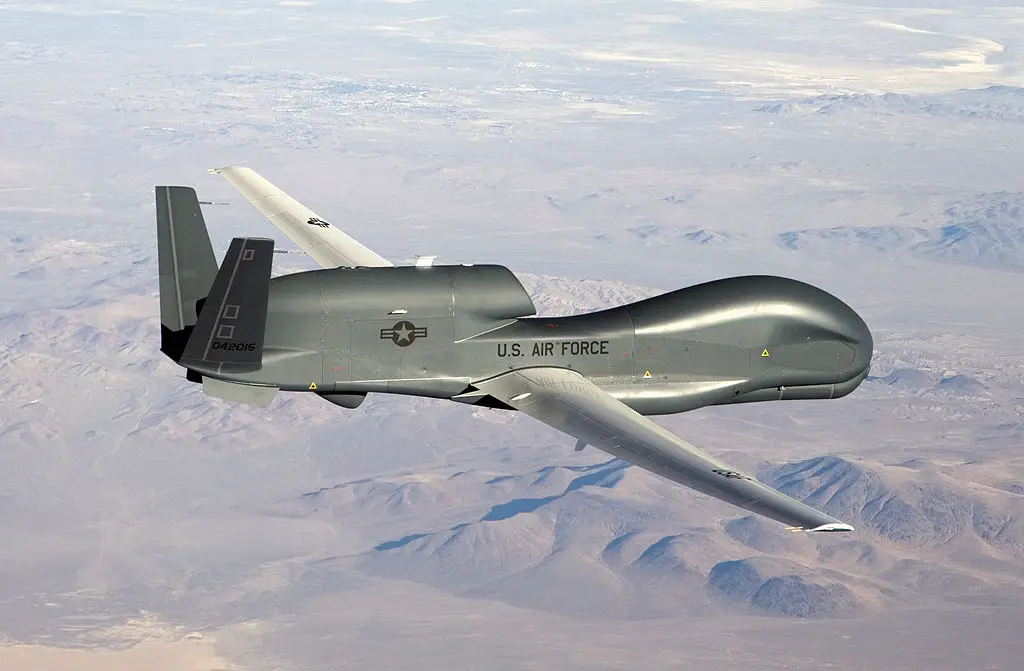The Republic of Korea Air Force (RoKAF) acquired its first RQ-4 Block 30 Global Hawkunmanned aerial vehicles (UAVs) on Dec. 23. The UAS arrived at the air base in Sacheon, South Gyeongsang Province, eight years after the initial agreement to purchase it from the US in 2011. The following three examples on order will arrive in the first half of 2020. South Korea selected the Global Hawk in 2011, and in December 2014 Northrop Grumman was awarded over $657 million by the US Department of Defense for the project. The sale was made under the auspices of the US government’s Foreign Military Sales programme.
Northrop Grumman RQ-4 Global Hawk is a high-altitude, long- endurance (HALE) unmanned aircraft system (UAS) designed to provide military field commanders with comprehensive, near-real-time intelligence, surveillance and reconnaissance (ISR) over large geographic areas. It was initially designed by Ryan Aeronautical (now part of Northrop Grumman), and known as Tier II+ during development. Able to fly at high altitudes for greater than 30 hours, Global Hawk is designed to gather near-real-time, high-resolution imagery of large areas of land in all types of weather – day or night. The EQ-4B Global Hawk carries the Battlefield Airborne Communications Node (BACN) payload providing life-saving support to warfighters.

Reconnaissance imagery is obtained through the use of the Global Hawk’s EISS. Block 30 EISS includes an all-weather synthetic aperture radar/moving target indicator (SAR/MTI), a high-resolution electro-optical (EO) digital camera, and a third-generation infrared (IR) sensor. These all operate through a common signal processor, which is equivalent to an airborne super computer. The integrated design of the sensor package gives commanders on the ground the ability to select radar, visible I/R information while using the SAR or MTI simultaneously, and transfer it to the warfighter in near-real-time.
The EISS allows Global Hawk to survey vast geographic regions with pinpoint accuracy. The system combines these advanced technology sensors with a range that extends more than halfway around the world and an ability to remain on station for long periods of time. The high-resolution image quality makes it possible to distinguish various types of vehicles, aircraft, people and missiles, and look through adverse weather, day or night. These features enable the Global Hawk systems to provide the warfighter with essential intelligence needed to achieve information dominance throughout battlespace and to respond to immediate surveillance needs in combat.
















